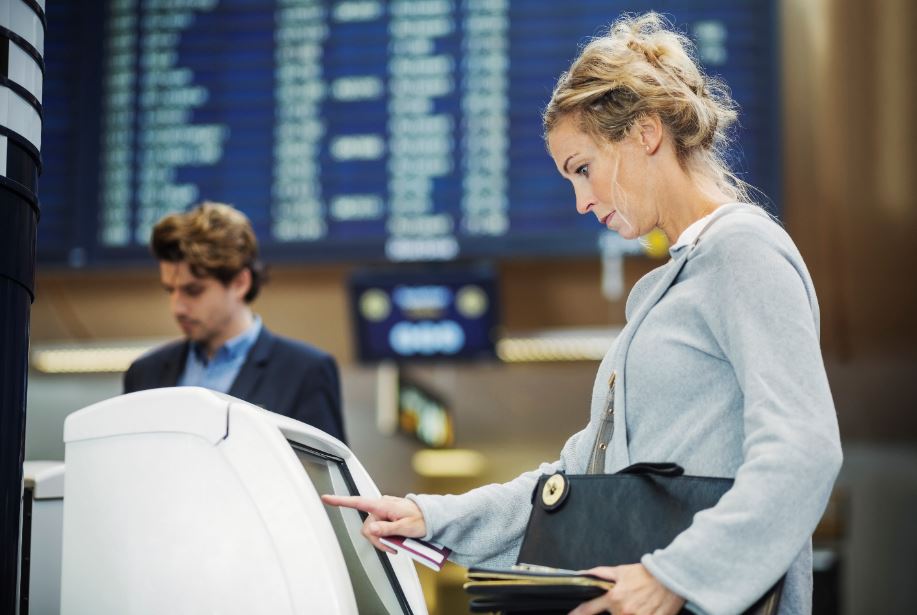Airport executives are still in crisis management mode. The pandemic is forcing them to make agonizing operational decisions. Yet the executives will soon resume thinking about the long term. And when they do, airport executives will consider increased automation as a top priority, experts said.
“The entire passenger’s journey through a terminal has to be rethought around themes of new conventions for personal space and new concepts for protecting wellness,” said Jonathan Massey, co-leader of the aviation sector at Corgan, a Dallas-based architecture firm that has worked on many terminals. “We’re looking at hospital design to see what may be relevant to apply to terminal design, for instance.”
Amsterdam’s Schiphol Airport underscores the twin trends of short-term crisis management and long-term interest in automation. Schiphol postponed on Monday its planned June decision to award a contract to build a new terminal until a date that they’ll set later.
But at the same time, Schiphol sped up its automation efforts for passenger processing. By the end of May, Schiphol will add computed tomography X-rays, known as CT scans, to security lanes in one of its departure halls. The so-called CT scans take hundreds of images of each piece of luggage and can reduce the amount of manual inspection and the number of hands that need to touch bags.
TOUCHLESS IS THE WATCHWORD
Airport retailers may look at ways to use tech to remove the need for people to touch objects.
“Touchless was an advancement that was coming but is now going to be fast-tracked,” Massey said.
Exhibit A: In March, Amazon said it has begun licensing its Just Walk Out automated checkout technology it has used at its cashless bookshops and convenience stores since 2018 to other airport retailers and other stores.
OTG, which runs 300 in-terminal restaurants and stores in 10 airports, has been rolling out the tech to its Cibo Express stores, starting at Newark Airport. It doesn’t involve user’s Amazon’s accounts. Passengers show their credit cards at turnstiles, and the store then bills them after they leave. Sensors on shelves and cameras on ceilings help keep people honest.
At airport restaurants, removing menu cards and bill holders — two things that diners often touch and that staff rarely sanitize — may become a goal, experts said.
Some airport restaurants will look for ways to coax passengers to use apps on their own mobile devices to choose menu items, order, and pay for meals. In one model, diners could scan a QR code — or square-shaped black-and-white barcodes — on a counter to fetch an online version of a menu and an order form.
Interest in “contactless dining” presents an opportunity for consumer-facing restaurant app platforms like OpenTable, TripAdvisor, and Zomato.
Airports may also make design changes that appeal to people’s psychological senses of wellness.
“Our pre-crisis research has shown that some people, especially ones over a certain age, dislike having an airport restaurant next to greenery or indoor landscaping out of a perception that the greenery may have germs,” Massey said.
ROBOTS MAY GAIN LEGITIMACY
Robots have been long-promised but slow to appear in airports. Robots may finally have their star turn, as manufacturers apply the savvy sensors of self-driving cars.
Hong Kong International Airport has begun using three self-driving robots to clean public areas and restrooms. Each intelligent sterilization robot, built by TMiRob, flashes ultraviolet light and spray a disinfectant to spray surfaces.
Other providers of sanitizing robots that kill most micro-organisms include Siemens, Uchimura Robotics, and UVD Robots.
Last month, London’s Gatwick airport introduced robotic parking, where passengers drop their car off and a robot valet, built by Stanley Robotics, pushes the car into an outdoor parking space. A passenger keeps their keys and hops a bus to the terminal.
One possible victim of a new interest in “social distancing” may be moving walkways. Airports may strip out the machines to allow for more space, relying on self-driving vehicles to instead transport people who need help traveling long distances…



